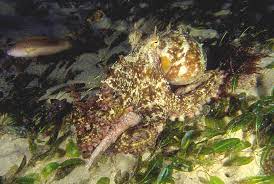
Amazing
New Octopus Species Discovered by Marine Biologists Off Australian Coast
As shown in a current article published in the journal Zootaxa, a unique species of octopus, live in shallow seas off the southwest coast of Australia and is part of the Octopus Vulgaris genus.
‘Benthic shallow-water species are some of the most researched and better-understood octopods,’ said Dr. Michael Amor from the Western Australian Museum and Royal Botanic Gardens Victoria and Dr. Anthony Hart from the Western Australian Fisheries and Marine Research Laboratory.
Because of it, we may be able to learn more about species boundaries and dispersion, as well as identify any previously unknown taxa.
In Octopoda, “ambiguous evolutionary change is prevalent, and throughout it, you’ll find examples.”
Few octopuses have any hard parts on their body or distinguishing characteristics. We may have underestimated the number of octopod species because of morphological plastic deformation connected to environmental circumstances and the ineffectiveness of conventional genetic techniques.”
“Within Octopoda, maybe the most memorable illustration of this occurrence you’ll notice among representatives of the Octopus Vulgaris community,” they continued.
Fisheries study, cell biology, earth sciences, marine research, neurophysiology, physiology of robots, and robotics are just a few of the many scientific fields interested in this community of octopus species.
One of the recently found Octopus Vulgaris species is conspecific with the prevalent Sydney octopus (Octopus Tetricus) from Australia’s east coast and New Zealand. However, it is significantly different in terms of morphology and genetics.
On Australia’s southwest coast, you can find the star octopus (Octopus djinda) between Shark Bay and Cape Le Grand.
Nyoongar people (‘a person from the southwest of Western Australia’) are the typical guardians of this territory,” the experts said.
A Nyoongar interpretation of “star” was chosen as a species name to honor their linkage to this territory. They use Star (luminous) because of the close relationship and differences from Octopus Tetricus.
An octopus with a mantle size between 10.9 and 17.7 centimeters got identified as a new species (4.3-7 inches).
Octopus Djinda endorses an incredibly successful fishery and is among the only two octopod fisheries on the entire planet to have obtained Marine Stewardship Council (MSC) sustainable certification, according to the scientists who conducted the study.
As a result of its taxonomic description, the status of the common octopus found off the coast of southwest Australia, Octopus djinda, can now be officially recognized.
The Habitat and Behavior of Octopus
Every ocean in the world is home to at least one of the 300 octopus species. Some, like the paper nautilus, float closer to the surface of the water than others. Mollusks, crab, and shrimps are the primary food sources for octopuses.
Generally, solitary animals live by themselves; quite often, in caves, they dig out of rock or in shells they hang over their heads. Once they’re neatly tucked away in their dwellings, some even end up making a door for themselves out of a rock.
The Intelligence of the Octopus
The octopus can move the suckers on their arms individually due to a complicated bunch of neurons serving as the animal’s brain. It allows it to feel, smell, and exploit its surroundings.
Octopuses can open clamshells, move rocks, and even dismantle aquarium tank filtration systems. One of the squirts water down the back of a keeper it seemed to dislike regularly. Another one sprayed a jet of water toward a light to cause a stir.
Amazing
America’s Youngest Teacher Started Her Career at 16

Shania Muhammad became a teacher at just 16 years old, after graduating from college at 15. She grew up in a home where learning was very important. She told “Good Morning America” about how her older brothers and sisters were big influences on her. They did well in school, which inspired her to do the same.
In seventh grade, her father noticed her advanced skills and started preparing her for college entrance exams. This led to her enrolling in college early and feeling like a superhero because she was so young. By 15, she was already finished with college and soon got a job offer to teach.
Muhammad waited until she was 16, so she could drive herself to work, and then started teaching 8-year-old students. These students see her as an adult and respect her, she says. In her classroom, she loves to keep the kids active with group work, presentations, and debates, creating a dynamic and engaging environment.
She encourages open communication in her class, telling her students they can talk about anything with her. Muhammad believes it’s important to have more confidence in success than in failure.
In her conversation with “Good Morning America,” Muhammad shared her view on facing the unknown with courage rather than fear. She encourages people to not hesitate and to create opportunities for themselves if they don’t already exist.
Amazing
Millions Tune In To See Conservation Group Save Seals
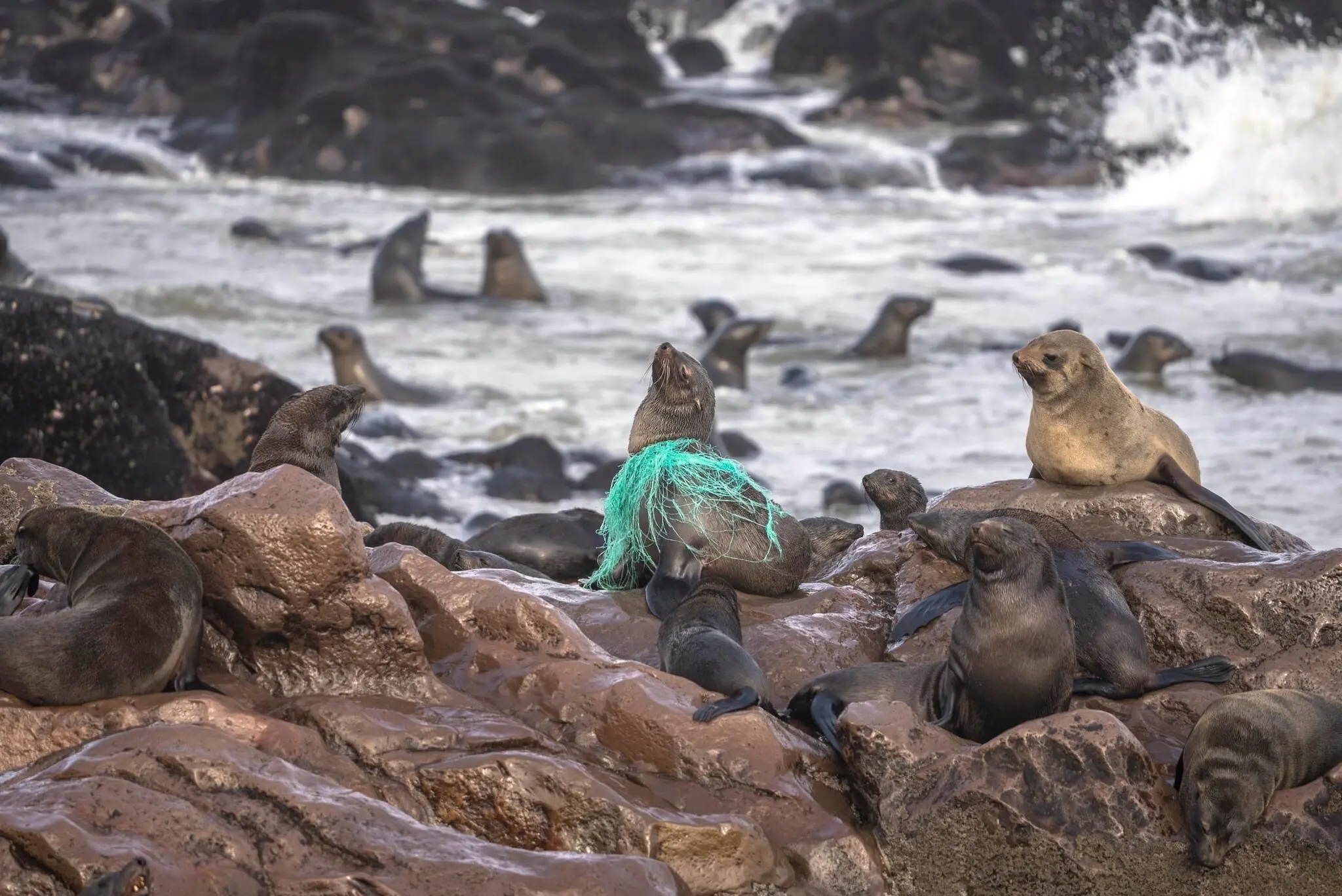
Ocean Conservation Namibia (OCN) is a group with a big heart and an important mission. Based in Namibia, a country with long, beautiful coastlines, OCN is dedicated to saving seals, especially the cute baby ones, from dangerous plastic and fishing lines.
Imagine you’re at the beach, and you see a group of seals playing and lounging around. Suddenly, you notice something’s wrong. One of the seals is stuck, tangled up in a mess of plastic or fishing line. It’s struggling and can’t get free. That’s where OCN comes in.
The team at OCN, led by Katja and Naude Dreyer, a married couple passionate about the ocean and its creatures, runs across the beach, right into the groups of seals. They’re on a mission to find any seal that’s trapped in harmful debris. Once they spot a tangled seal, they quickly and carefully cut off the entangling mess and set the seal free.
Since 2020, OCN has rescued about 3,000 seals! That’s a lot of happy, healthy seals swimming back in the ocean because of their efforts. Their rescue missions became super popular online during the pandemic. People all over the world watched their videos, feeling a bit better seeing the seals being saved during tough times.
OCN’s work is unique and impactful. Jeff Harris, a research ecologist, mentioned that the number of seals OCN saves is much higher than in other parts of the world. While he managed to free 100 sea lions in his best year, OCN often saves that many seals in just a month!
The Dreyers started OCN about twelve years ago. Initially, Naude would try to free the seals using a paddle or by grabbing them, but it was tough. Things got better when they received a special seal rescue net, making their missions easier and safer.
During the pandemic, when their kayaking business paused, they focused even more on rescuing seals. They also shared their work online, touching people’s hearts worldwide. Their video titled “Baby seal thanks his rescuers” got over a million views!
OCN not only raises awareness about the seals but also shows us the bigger problem – our oceans are filled with trash. They’ve shown that every little bit helps and that we can all do something to protect our marine life.
With donations from kind-hearted people, OCN has grown, now having a team of seven dedicated members. They’re doing more than just rescuing seals; they’re inspiring others to care about our oceans and the creatures that call them home. The Dreyers themselves have even changed their lifestyle, choosing not to eat fish and other animal products, to live in a way that respects the animals they work so hard to save.
So, Ocean Conservation Namibia is not just about saving seals; it’s about changing the way we see and treat our oceans, one rescue at a time.
Amazing
Hero Bus Driver Saves Students from Fiery Danger in New Orleans

In a heart-stopping incident in New Orleans, a school bus driver named Kia Rousseve became a local hero when she saved nine students from a burning bus. Her quick actions turned a potentially tragic situation into a story of courage and quick thinking.
It was a regular Wednesday morning, and Rousseve was on her usual route, about to make her fifth stop, when she noticed something alarming: smoke was coming from the bus. Without a moment’s hesitation, she knew she had to act fast. “As soon as I seen the bus smoking, my instinct was get them off of the bus,” Rousseve recounted.
A little girl on the bus ran up to her and confirmed her fears, saying the bus was on fire underneath. Rousseve didn’t waste a second. She stopped the bus and made sure all the students got off safely. “I turned the bus off and got off. When I got off, the bus blew up,” she said, describing the terrifying sounds of the explosions.
Rousseve’s primary thought during the ordeal was her child, which fueled her determination to ensure the safety of all the students on board. Her employer, Community Academies of New Orleans, praised her actions as “Courage on wheels.” Having driven school buses for three years, Rousseve demonstrated experience and bravery that day.
Feeling grateful and proud, Rousseve believes a faulty alternator was the cause of the fire. She’s relieved and happy that she could save the lives of the children, as well as her own. “I feel great about saving other kids’ lives and saving my life,” she expressed, adding that she felt divine protection was at play during the emergency.
Amazing
Mackenzie Scott’s Big Give: $640 Million to Nonprofits
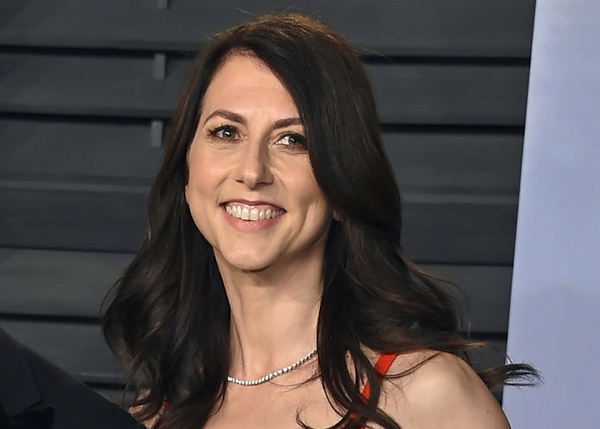
Mackenzie Scott has made headlines again with her generous donations to nonprofit organizations. Initially, Scott promised to give $1 million each to 250 nonprofits, but she surprised everyone by more than doubling her donation! Now, she’s giving a whopping $640 million to 361 organizations.
So, who is Mackenzie Scott? She’s a billionaire philanthropist who likes to help out by giving her money to groups that do good things for communities. This time, her organization, Yield Giving, decided to help even more than planned because of the great work these nonprofits are doing.
Scott worked with an organization called Lever for Change to find these nonprofits. They had a big, open call where nonprofits could apply for the money, and the response was amazing. Lever for Change said they were so impressed by the work these groups are doing that they wanted to give money to more of them.
Here’s how it broke down: 279 top-rated nonprofits got $2 million each, while another 82 organizations received $1 million each. These groups do all sorts of important work, like helping people get back on their feet after being in jail, or creating theater programs with young people in Los Angeles.
What’s really cool is how they decided who got the money. It wasn’t just a few people making all the decisions. Instead, the nonprofits got to score each other, and then a panel of experts made the final picks. This way, lots of different voices helped choose the winners.
Scott and her team believe it’s important to shine a light on these organizations that are making big changes but might not always get noticed. They want to make sure these groups have what they need to keep doing their great work.
Mackenzie Scott said sharing information about these donations is important because it helps others see the good that comes from giving. She hopes that by talking about it, more people will be inspired to help out in their own ways.
Amazing
Waldo Middle School Receives Grant from Portland Trail Blazers Foundation
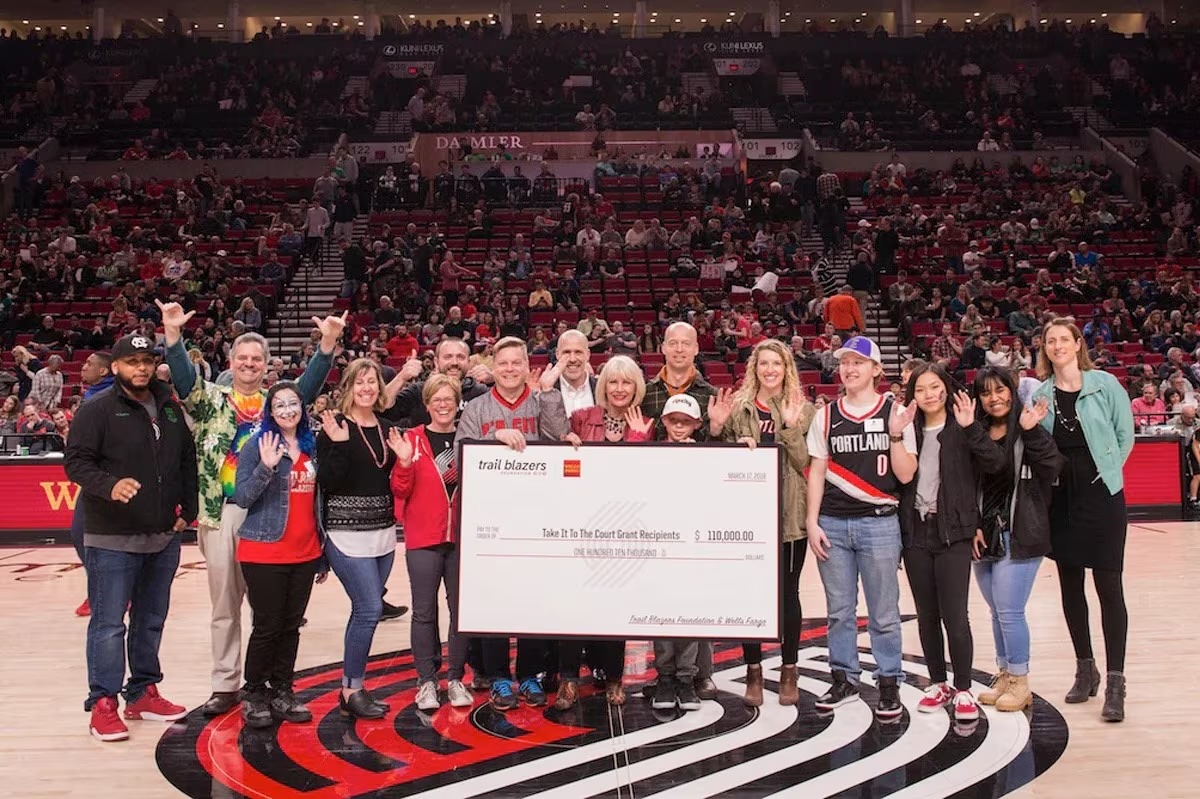
In Salem, Oregon, Waldo Middle School has received exciting news that has left the community buzzing with anticipation. Thanks to a generous grant from the Portland Trail Blazers Foundation, the school is set to enhance its support for students in need.
Every year, the Trail Blazers Foundation’s “Take it to the Court School Grants” program awards funds to schools across Oregon that are making a significant impact on children’s lives. Waldo Middle School is one of the lucky recipients this year, a recognition that has thrilled Sonia Bosquez, the Community School Outreach Coordinator. “I was shocked. I couldn’t believe it,” she said, acknowledging the stiff competition from other deserving schools.
The grant will bolster the efforts of “Waldo’s Closet,” a school initiative that provides essential supplies like clothing, shoes, hygiene products, and even snacks to students facing hardships. “We came up with it as a way to help students on a day-to-day basis,” Bosquez explained. The program has grown to support students from other countries or those experiencing emergencies, often extending aid to their families as well.
Annie Klug, Executive Director of the Trail Blazers Foundation, emphasized their commitment to supporting historically marginalized and underrepresented communities. The foundation focuses on connecting youth to the environment, education, and sports. “We exist to raise money and get it back out to exceptional schools and nonprofits and students,” she stated.
The grant holds special significance for students like Jhoana Escalona, an 8th grader at Waldo Middle School. “For me, it feels special because there are a lot of kids whose parents can’t afford the fees and can’t pay,” she said. The support means a lot to students whose families are working multiple jobs and may not have the opportunity to watch their children participate in sports and other activities.
The Trail Blazers Foundation’s ability to provide these grants is powered by the fans. “We have fans that purchase ‘Rip City’ license plates or 50/50 raffle tickets at our games, and all of that contributes to our ability to make those grants,” Klug explained.
The grant from the Trail Blazers Foundation is more than just financial support; it’s a beacon of hope and an affirmation of the community’s efforts to support its youth. Waldo Middle School is poised to make an even greater difference in the lives of its students, thanks to this generous contribution.
-

 OMG6 years ago
OMG6 years agoA Couple Gave Birth to the Most Beautiful Twins Ever
-

 OMG6 years ago
OMG6 years ago20 Rare Historical Photos
-

 OMG6 years ago
OMG6 years agoHilarious Airport Photos
-

 Cute5 years ago
Cute5 years agoMom Refuses to Let Daughter Eat Sugar and Years Later This is What She Grows Into
-

 OMG5 years ago
OMG5 years agoTop Secret Air Force One Facts That You Never Knew
-
OMG5 years ago
The Funniest Yearbook Photos Of All Time
-
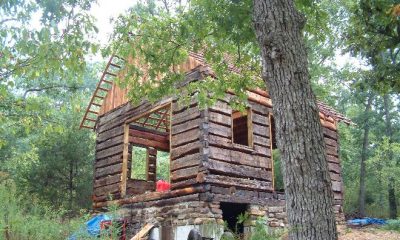
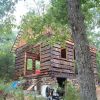 OMG6 years ago
OMG6 years agoRetired Mathematician Restores Log Cabin
-

 OMG4 years ago
OMG4 years agoWhat Happened When This ‘Duck Dynasty’ Legend Chopped Off His Beard?